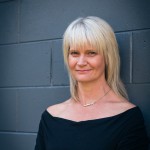
Exploring interactivity: The rewards of cross-disciplinary practice
- 2 Jun 2015
Sue Swinburne talks about how interactivity manifests in her work as a documentary maker and writer…
Mark Tribe from New York’s School of Visual Arts has suggested that often “technology, at best, is seen as a way of solving artistic problems; at worst – as a problem to be solved.” Indeed, we hear this dichotomy frequently in the arts and cultural sector. For example, technology (and often in the form of its ubiquitous spawn: data) is frequently reduced to its instrumental function for arts organisations as they battle for audiences’ attention. Alternatively, ‘technology’ can also get characterised as a reductive, mechanised, blunt instrument – an insidious force that is pushing us away from what is nuanced, rich – human – in creative practice.
I’m a documentary maker and a writer, with over twenty years’ experience in ‘heritage’ forms of media, namely broadcast television and print media. I came to using interactivity in my work from a twofold desire. Firstly, I wanted to experiment: to take the core of the ideas I find compelling – storytelling and factual media – and to see how interactivity can push my work into new forms. I wanted to see what this means for audiences – how it could bring ideas and work to intersect with emerging cultural behaviours in ways that are thoughtful, pleasurable, and provocative.
Secondly, this desire also sprang out of the shift in production, distribution, and commercial models for independent artists. Put simply: in a commercial sense, the old ways of working – for me – no longer work. The traditional financing and distribution pathways for my work are rapidly disappearing. I want and need to continue to work – and so there’s an extrinsic compulsion at play here as well.
How interactivity manifests in my current practice is varied. Its form is driven by the needs and the opportunities of a particular project to make use of modes of interactivity – and only as these best serve both the ideas, and the audience.
One of my current projects is a multiplatform documentary: it has a linear, feature-length documentary as one element, but with a separate, interactive documentary which can be consumed alone or in tandem with the linear work. The interactive documentary came out of the possibilities rendered by the subject matter: a highly successful, Brisbane-based mobile games company. Whilst there’s a story that’s served by a conventional story structure (the linear documentary), there’s also material, ideas and assets which lend themselves richly to interactivity. This latter work is a story about games and the people who make them, told through a game-like interface.
A very different example of work came out of a recent research project. Collaborating with computer scientists in the UK, we prototyped Droplet – a story-sharing app which combines the experience of overheard conversations with interview. This mobile app features audio of short, powerful, personal anecdotes recorded by anonymous users in response to the app’s questions. The app geo-caches these stories at the location where they’re recorded, where they can be discovered by other users, who are alerted to their presence by their mobile device.
These collaborations have been amongst the most rewarding creative experiences I’ve had in many years. Their success has come from a shared and genuine openness to exploring new ideas, and desire from everyone involved to interrogate our assumptions about our disciplines. The partners I’ve had the privilege to work with have been delightful for their generosity of spirit and exceptional skills. These partnerships start from a commitment to making high-quality, thoughtful, and engaging work that draws agnostically on the skills, knowledges and talents of everyone in the room.
David Pledger, curator of the forthcoming 2970 Degrees on the Gold Coast, argues that an artist’s reflex is “to explore, experiment, interrogate and translate the material of the day by creating artworks that are mentally, socially and politically inventive and challenging.” This neatly sums up my desire to engage with technology in my practice: it is both the tool to create my work, but also provides a reflexive opportunity to – I hope – deepen the reflection not only on the content, but also the container.
Sue Swinburne
 With more than twenty years of experience in factual media production, writing and education, Sue began her career on the ABC’s 7.30 Report in Brisbane. In London, she worked as a freelance Assistant Producer, Director and Producer, primarily on observational documentary series and singles for Channel 4. Returning to Australia in 2001, Sue had a hiatus from filmmaking to become a mother to two boys. She soon took up lecturing and research at Griffith Film School in the areas of Producing and Distribution. In 2013, she was chosen to be an artist in residence at the Brisbane game developers, Halfbrick Studios. As a PhD student, she is researching the creative and commercial possibilities for interactive factual storytelling. As part of this work, Sue’s developing and producing a range of interactive projects founded on dynamic, strategic engagement with audiences across digital platforms.
With more than twenty years of experience in factual media production, writing and education, Sue began her career on the ABC’s 7.30 Report in Brisbane. In London, she worked as a freelance Assistant Producer, Director and Producer, primarily on observational documentary series and singles for Channel 4. Returning to Australia in 2001, Sue had a hiatus from filmmaking to become a mother to two boys. She soon took up lecturing and research at Griffith Film School in the areas of Producing and Distribution. In 2013, she was chosen to be an artist in residence at the Brisbane game developers, Halfbrick Studios. As a PhD student, she is researching the creative and commercial possibilities for interactive factual storytelling. As part of this work, Sue’s developing and producing a range of interactive projects founded on dynamic, strategic engagement with audiences across digital platforms.
Feature image: Prototype of interactive documentary, courtesy of Sue Swinburne.

